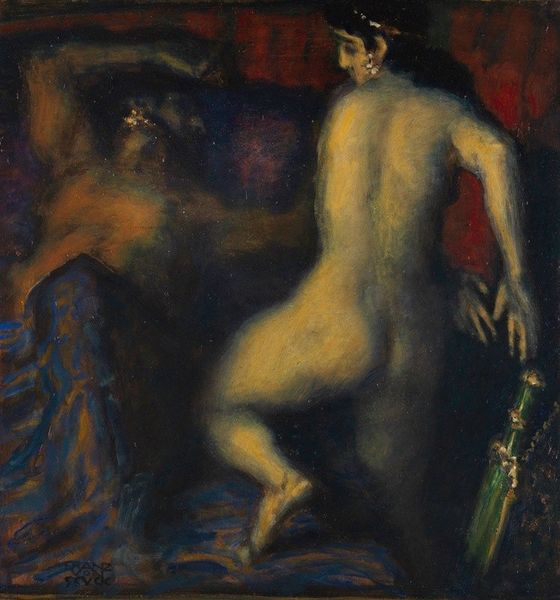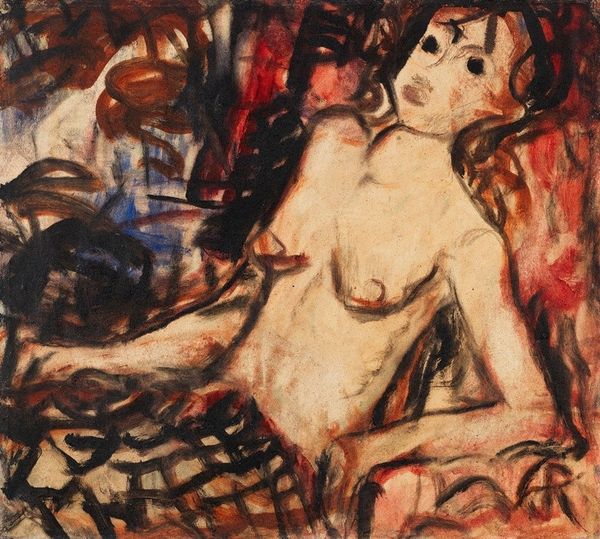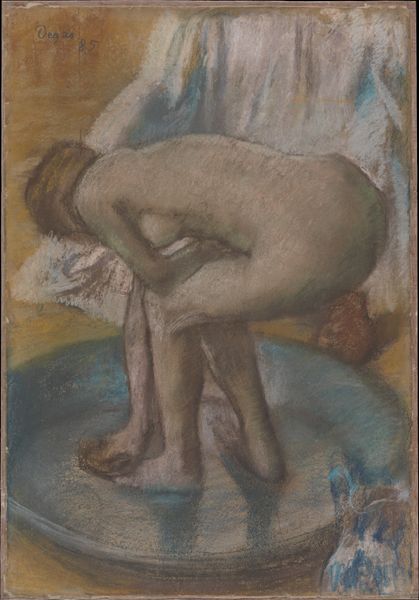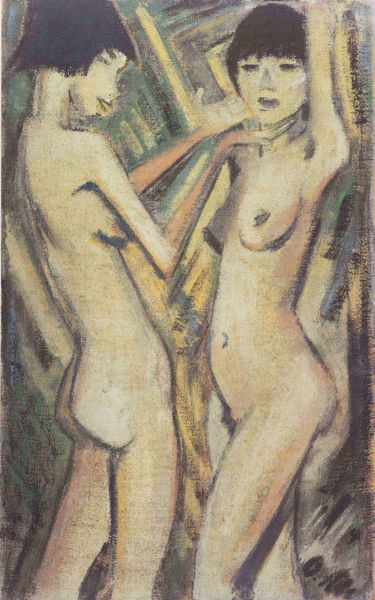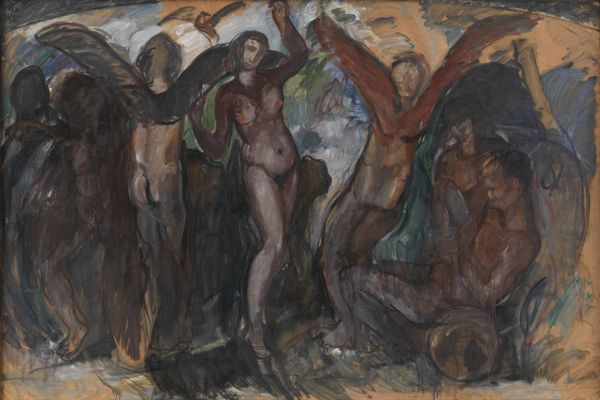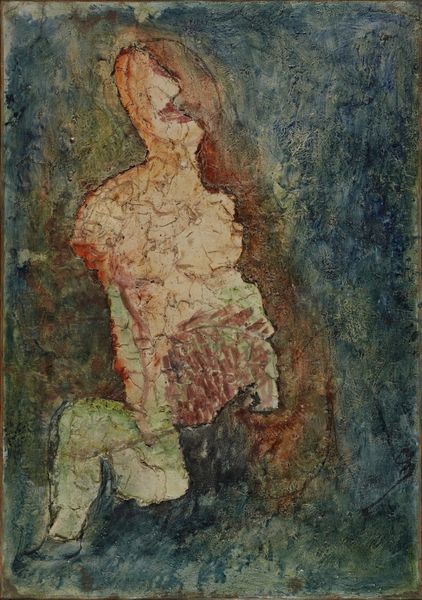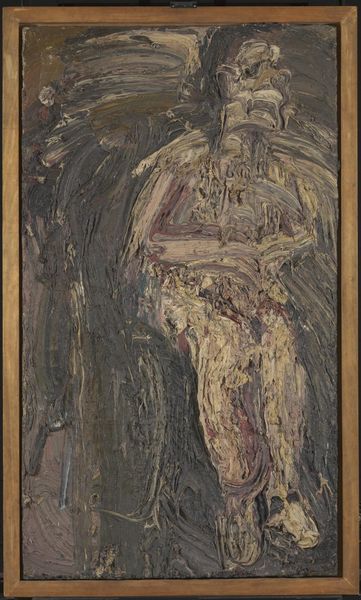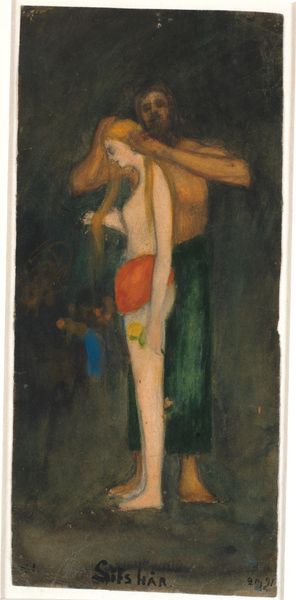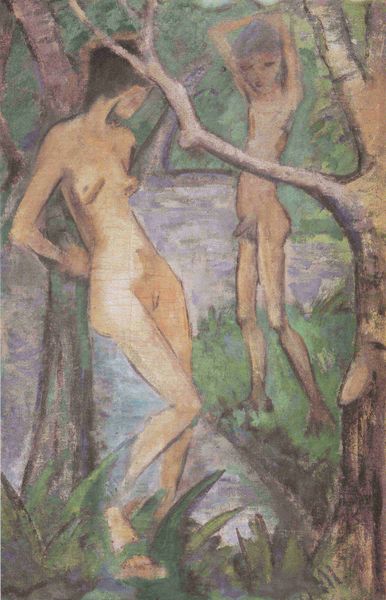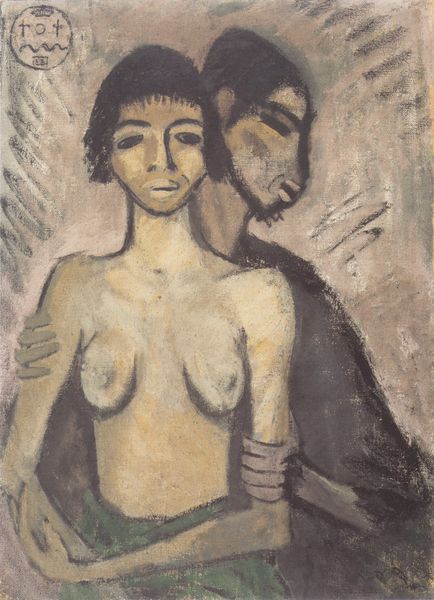
Dimensions: support: 1940 x 1303 mm frame: 2170 x 1515 x 108 mm
Copyright: © ADAGP, Paris and DACS, London 2014 | CC-BY-NC-ND 4.0 DEED, Photo: Tate
Curator: Francis Picabia's 'Otaïti' is a striking work. It's part of the collection at the Tate, and I think it encapsulates a certain sense of longing. Editor: Whoa, it's like a fever dream. That earthy palette with the figure almost dissolving into the background—it feels primal, urgent. Are those leaves or wings? Curator: Possibly both. Picabia’s artistic journey was restless, marked by Dadaist rebellion against academic norms, and he embraced pastiche freely. This piece feels like a return to primitivism, echoing Gauguin's fascination with Tahiti. Editor: But way more messed up, right? Gauguin idealized, but Picabia…he’s showing us something untamed. It’s like the Garden of Eden after a hurricane, the innocence stripped away. It hits different, doesn't it? Curator: It does. Picabia challenges our notions of exoticism, doesn’t allow us a comfortable distance. Editor: It’s got me hooked. It feels like a secret whispered in a dark room.
Comments
Join the conversation
Join millions of artists and users on Artera today and experience the ultimate creative platform.
tate 8 months ago
⋮
With its warped scale and unexpected combinations of images, Otaïti has a dream-like quality, comparable to Surrealist preoccupations with the subconscious and freeing the imagination. This ethereal quality is heightened by thinly-applied layers of paint and varnish, producing a translucent effect. Otaïti is an example of Picabia’s ‘transparencies’, painted using layered images, which he described as ensuring ‘all my instincts may have free rein’. Picabia enlarged the central female figure from a photograph by Trude Fleischmann of the ballet dancer Claire Bauroff. Gallery label, January 2022

